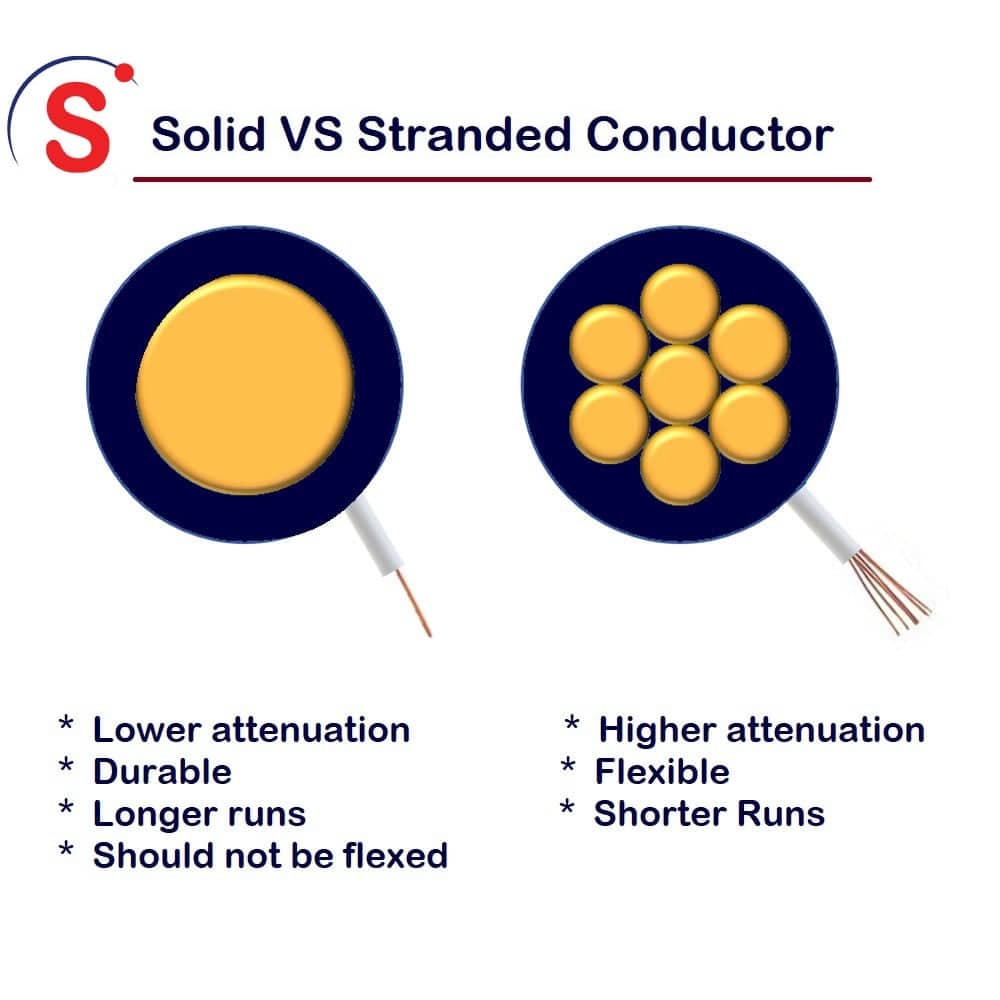What Are the Differences Between Wires and Cables?
Everything in our home, office and even car has a collection of wires and cables that help it function.
So, it makes sense that the commonly present materials during electrical installations are wires and cables. However, many people overlook the significant differences between the two because they may appear the same at times. This article will explore the vital materials in wires and cables to understand their differences.
Wires
Essentially, a wire is a single conductor that can either be solid or stranded. Since it is electrically conductive, wires carry electricity to power any mechanical devices and automotive vehicles, transmit telecommunication signals, produce heat, and manufacture parts such as pins, bulbs, and needles. Available wires in the market today are either uncovered or shielded with a color-coded sheath.
Types of Wires
1. Solid Wires
Solid wires are single conductor materials that reduce resistance, suitable for operations within higher frequencies. This type of wire can either be produced without a cover or insulated by a colored sheath.
2. Stranded Wires
The second type of wire is the stranded wire, which is composed of thin strands twisted together. It offers flexibility, perfect for calibrating wirings over a long period. In comparison with solid wires, stranded wires have a more significant cross-sectional area.

Advantages of Wires
Wirings are integral to be able to power every appliance around your house. It distributes the electricity throughout the power circuits in a property. Here are significant advantages of electrical wirings:
- Ensure Safety
All types of wires are safe and can work with all electrical appliances commonly used in households. You can take advantage of wire lengths and features to reduce overall wirings considering that the main wiring is inside the main component. The tendencies for electric shocks are unlikely, along with other dangers associated with electricity. The reason for this is that the single wire that remains outside directly connects to electrical devices. As a result, there is no risk when touching an appliance’s switch. - Durability
Wires offer outstanding durability since they go inside the walls. Since walls protect wires in most cases, they are rarely at risk for wear and tear. - Versatility
Implementing comprehensive electrical wiring promotes convenience and versatility. Anyone can work around wires freeing you from performing cleaning and renovation.
Cables
Cables are composed of two or more insulated conductors that also come uncovered or protected with a colored sheath. The group of insulated conductors is intertwined together to accelerate power transmission. Cables are suitable for transmitting telecommunication signals and transferring electricity to devices, appliances, and vehicles.
Types of Cables
1. Twisted Pair Cable
From its name, twisted pair cables consist of two separate insulated wires that are twisted together and run in parallel. The pairs are twisted together to prevent excessive noise as a result of magnetic coupling. These cables transfer signals for either data communication or telecommunication.
2. Multi-conductor Cable
Multi-conductor cables are composed of a group of cables that are well-insulated against each other. As a result, electromagnetic interferences get minimized to make way for seamless data transmission.
3. Coaxial Cable
Coaxial cables involve a solid conductor material that is surrounded by another foil conductor on the outside. The two layers of coaxial cables need to stay separated from one another. Broadcast media, radio, television, and other communication channels use this type of cable frequently.
4. Fiber-Optic Cable
Fiber optic cables are a group of wires made of optical fibers. These cables have ultra-thin wires generated from either glass or plastic. Since these fibers or hair-thin, they can transfer a massive volume of data compared to alloy cables. As one of the newest materials in cables, its features are limited to data and signal transmission and do not include power connections.
Advantages of Cables
- Heavy-Duty
Cables are known for being heavy-duty, which indicates that they can hold up for as long as possible. The thicker the cables are, the more durable they usually are. On top of that, cables can withstand intense levels of energy to be conducted through them continuously. - Higher Strength
Cables covered with a protected sheath often have a thick vinyl coating for higher strength. This shielding serves as a barrier against rusting and corrosion over time. The coating can also make it easier for anyone to work around cables giving them easy-grip capabilities for secure positioning. - Well-Insulated
As previously mentioned, cables are well-insulated, giving you a flexible product. These cables can work regardless of environmental factors like the temperature dropping down to -40 degrees Celsius.
Maintaining Wires and Cables: Things to Consider
Now that you have a clear understanding of the functions and advantages of wires and cables observe the following points to maintain their condition.
- Once the cables or wires are damaged, make sure to replace them immediately.
- For safety, you have to see that all the cables and wires around your property are polarized.
- As a general rule of thumb, keep both wires and cables out of reach of children.
- Secure your cables and wires positions to ensure that the areas cannot be a trip or accident hazard.
Wires VS Cables: Major Differences
Everyone needs to determine the differences between two commonly used materials in electrical installation projects. Here are the fundamental differences between wires and cables to help you understand how and when to use each.
| Characteristic | Types | Advantages |
|---|---|---|
| The wire is a single insulated or bare conductor that gets placed inside the jacket. | Solid Wires: Single strand wire conductor Stranded Wires: a number of small wires bundled or wrapped together to form a larger conductor. | Ensure Safety Durability Versatility |
| A cable is composed of two or more insulated wires in one jacket. | Twisted Pair Cable: two conductors intertwined Multi-conductor Cable: Cable with more than one conductor Coaxial Cable: Two layers of cables Fiber Optic: a group of wires out of optical fibers | Heavy-duty Higher Strength Well-insulated |














































